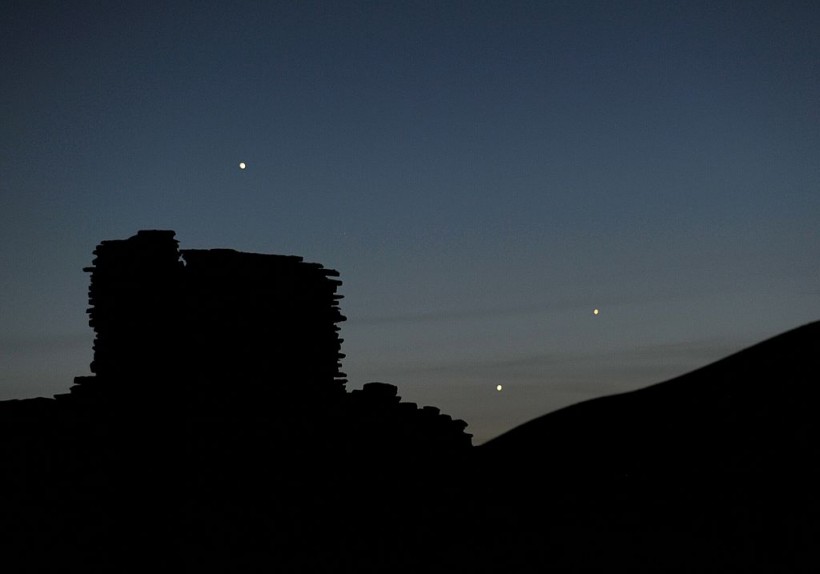Five planets will be in a large planetary alignment at the end of March, which is something that astronomy enthusiasts would not want to miss.
As per FOX 5 New York, it will not be a straight line of planets seen in the night sky. But the Moon and at least five planets in the Solar System will be visible in almost an arc shape.

The planets Jupiter (L), Venus (C) and Mercury (R) are seen in an unusual conjunction setting over the Wupatki pueblo ruin on May 24, 2013 at Wupatki National Monument north of Flagstaff, Arizona.
Planetary Alignment Explained: Which Planets Will Be Visible?
By definition, a planetary alignment happens when two or more planets form a line as seen from the Sun and sometimes these planets may form an arc.
But as per Star Walk's website, a planetary alignment typically involves a number of different planets that gather together closely on one side of the Sun.
They noted that the planets that will be involved in the large planetary alignment late this month would be Mercury, Venus, Mars, Jupiter, and Uranus. These five planets will all be visible in the night sky on March 28.
Experts said that the right equipment will help in seeing it more clearly so skywatchers could enjoy the sight. Rick Fienberg, the senior contributing editor for Sky & Telescope and senior advisor to the American Astronomical Society, said that the celestial event will be visible a few days before and even after March 28.
READ ALSO: Five-Planet Alignment To Light Up The Morning Sky
Some Planets May Be Easier To See
The last time five planets aligned was in 2020 and 2016 before that. Last year, stargazers in the northern hemisphere were able to see Mercury, Venus, Mars, Jupiter, and Saturn all at once.
MailOnline reported that the planets are expected to be aligned in a 50-degree sky sector and appear closer together when viewed from Earth in a small region above. It is different from an astronomical alignment, which is when planets come together simultaneously on the same side of the Sun.
Beth Biller from the University of Edinburgh told the news outlet that some planets would be easier to see than others. For example, bright planets Venus and Jupiter are easier to see but Mars would be a bit fainter. More so, seeing Mercury would be a lot trickier and will need a dark site with a clear view of the horizon for it to be seen.
Biller noted that Uranus would be the faintest and hardest to see as it will require binoculars or a telescope to see the planet. Feinberg stressed that seeing all planets simultaneously could be challenging based on a person's location. He said in one interview that Jupiter and Mercury might not be visible in some locations unless they have a clear sky and a nearly flat western horizon.
Nonetheless, the five planets should all be visible when viewed using binoculars. Star Walk reports that several other planetary alignments are set to take place this year.
RELATED ARTICLE: Rare 5-Planet Conjunction Peaks Next Week; Watch Mercury, Venus, Mars, Jupiter, and Saturn Light Up Morning Sky For the First Time in 18 Years
Check out more news and information on Space in Science Times.














